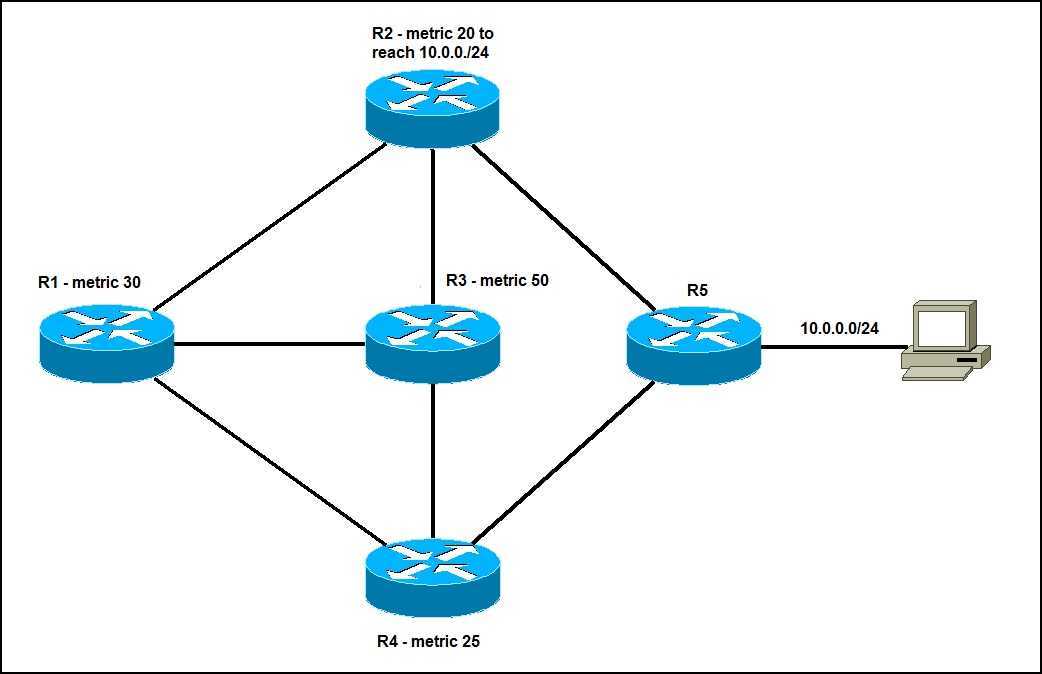Successor and feasible successor explained
Two terms that you will often encounter in the EIGRP world are the successor and feasible successor. Here are the definitions of these two terms:
- successor – the route with the best metric to reach a particular network. This route will be placed in the routing table.
- feasible successor – alternative routes to a particular network that can be used immediately if the currently best route (the successor) fails, without causing a routing loop. These routes are stored in the EIGRP topology table.
Not all alternative routes to a particlar network will become feasible successors. In order for a route to become a feasible successor, the following condition must be met:
the neighbor’s advertised distance (AD) for the route must be less than the successor’s feasible distance (FD).
The definition above can be more easily understood with an example:
We have a network of five routers, all running EIGRP. R5 has advertised the 10.0.0.0/24 subnet. R1 has three paths to reach the 10.0.0.0/24 subnet:
- R2 > R5 – let’s say that this is the best route (the successor route). This route will be placed in R1’s routing table, with the metric of 30.
- R3 > R2 > R5 – for a route to become a feasible successor, the neighbor’s advertised distance (AD) for the route must be less than the successor’s feasible distance (FD). This is not the case here – R3 has advertised the metric of 50 to reach 10.0.0.0/24, which is greater that the feasible distance of R1 (30).
- R4 > R5 – this route will become a feasible successor route, since R4’s advertised distance is less than the successor’s feasible distance (25 < 30). This route will be placed in R1’s topology table and can be used immediately if the best route fails.




